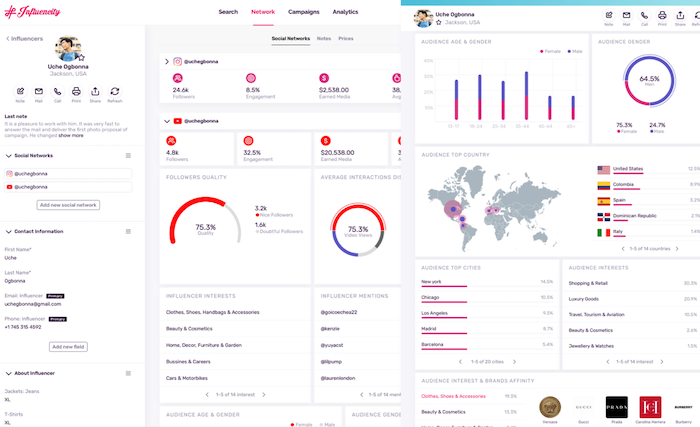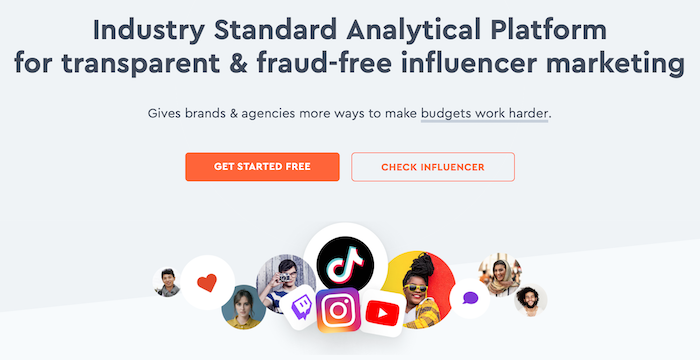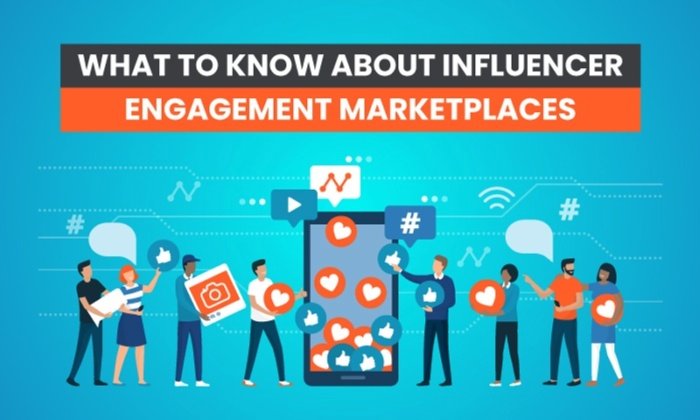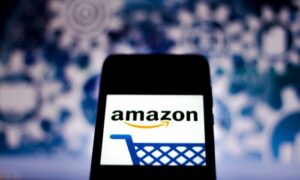Influencers are everywhere.
There are roughly 37 million influencers on Instagram, and around 1.5 million of them work on YouTube.
Every day, these creators promote brands across social media, talk up great products, and directly influence how people spend their hard-earned money.
Sounds great, right? There’s just one problem.
It’s really hard to actually find a great influencer to grow your business.
Whether you’re digging through social media platforms for ideas, or spending hours pitching creators, it’s a time-consuming process. In fact, according to Mediakix, 61 percent of marketers struggle to find the best influencers for their campaigns.
What’s the answer?
You need a more effective means of sourcing influencer talent and making connections. Influencer marketplaces can help you do just that, so let me show you how they work.
Why You Should Use Influencers in Your Marketing Strategy
Before we get started, let’s touch on influencer marketing more generally. Is it worth your time, or should you leave the influencer trend behind?
While influencer marketing isn’t for everyone, I think you should give it a go if it makes sense for your business.
Why? Because influencer marketing works.
- According to Instagram, 87 percent of users have bought something promoted by an influencer.
- You can make $5.20 for every $1 spent on influencer marketing, as reported by the Influencer Marketing Hub.
- Over 89 percent of marketers agree that influencer marketing works for their business.
While I’m not suggesting you should rely solely on influencer-based marketing, the trend is here to stay, and it’s worth trying.
If you’re still not convinced, here’s another way to think of it. Around 26 percent of consumers use ad blockers to hide ads and improve their browsing experience.
There’s a high chance those ads you’re paying for won’t reach their intended audience! For sales-based companies, influencer marketing could be a promising alternative.
Ready to find influencers for marketing campaigns? Let’s explore the mysteries of the influencer marketplace.

How Businesses Find Influencers
You can find influencers online in four major ways:
- Social media platforms: There’s no shortage of social media platforms to browse for influencer talent, albeit this is a time-consuming process.
- Search engines: Google is a great way to find competitors and identify which influencers they use for their campaigns.
- Influencer marketplaces: These marketplaces help you match with various influencers in your niche.
- Influencer agencies: You can hire an agency to match you directly with the influencer they think suits you best.
Although we’re focusing on influencer marketplaces, remember it’s not the only strategy for finding influencers to market your business.
What Are Influencer Marketplaces?
Influencer marketplaces match businesses with influencers working in their niche, whether it’s beauty, fitness, food, and so on.
It’s a simple premise. You sign up and post a brief describing the services you’re looking for and wait for influencers to respond. If you find an influencer you’re happy with, you can hire them to create content, promote your brand and, well, influence people to buy your products.
You’re not limited to one influencer, either. You can work with multiple influencers across the platform, and you can recruit more talent as you go.
The upshot? Whether you’re running a one-off product campaign or you’re looking for a more stable relationship, influencer marketplaces could work for you.
Some of the more popular influencer marketing platforms include:
- Influence
- Intellifluence
- AspireIQ
- Webfluential
- Famebit
- Influencity
It’s common for influencers listed on marketplaces to work across two or more social media platforms. For businesses, this is great news because you can use one or two trusted influencers for all your content marketing.
Upfluence, for example, primarily pairs businesses with Instagram influencers, but there’s some scope to access influencers working on TikTok and Facebook, too:

While HypeAuditor matches you with influencers working across the likes of Twitch and YouTube:

There’s a huge range of marketplaces out there, so be sure to explore your options. Here are a few things to consider:
Platform Fees
Whichever marketplace you choose, you’ll usually pay a fee for signing up and using their services, so be sure to factor in the cost before you join.
Some platforms, though, like Influence, let you set up a basic account for free. The problem? You’re limited in terms of how many messages you can exchange each month, and how many profiles you can see in the search results. While this might work for one-off campaigns, it may be less sustainable for long-term influencer marketing.
Weigh up the pros and cons of the different fee structures before you commit.
Influencer Marketplaces Vs. Influencer Agencies
We touched on this earlier, but to be clear, influencer marketplaces and influencer agencies are totally different things.
- Influencer marketplaces allow you to work directly with your chosen influencer. You put your brief out there and look for talent.
- Influencer agencies, on the other hand, do some of this work for you. They vet their influencers against your brief and select the ones they think are best suited to your needs.
You can use both marketplaces and agencies if it suits your marketing strategy. Just bear in mind that they’re not the same thing.
In short, think of influencer marketplaces like a matchmaking service. While there’s no guarantee you’ll find the right influencer to collaborate with, there is a chance you’ll find a long-term creative partnership.
How to Use Influencer Engagement Marketplaces
Are you excited to give influencer marketplaces a try? Great! Before you jump into a subscription, though, here are some steps I suggest you work through.
Identify Your Goals
Before you even join an influencer marketplace, be clear on what you’re trying to achieve. For example, are you trying to increase sales, generate hype around your brand, or boost your engagement levels?
Jot all your goals down and try to identify which one is your priority.
Next, clarify your target audience and how they best respond to influencer marketing. That way, you can figure out precisely what role the influencer will play in your campaign.
As an example, say you’re a brand looking to launch a new product aimed at millennials on Instagram. You want to build hype and increase sales. Your main goal is to sell the product, so you’re looking for influencers who can not only help you but who can speak your target audience’s language.
Determine Your Budget
Once you know what you need from an influencer marketplace, it’s time to set your budget. How do you know what’s a “fair” amount to pay your influencer, though? Unfortunately, there’s no right answer, but asking yourself the following questions can serve as a guide.
First, what kind of content do you need? You might, for example, pay more for an in-depth product review video than a few short posts on Instagram.
Next, which platform are you targeting? Each platform requires different creator resources, so they command different rates. On average, you might pay an influencer $10 per 1000 followers for an Instagram post, but that goes up to $25 for a Facebook post.
How big is the influencer’s audience? The bigger the influencer, the more they can charge for their time.
Finally, is it a one-off or long-term campaign? You could potentially get better rates if the influencer knows they’ll get steady work from you. Seasonal campaigns could cost you more, since there’s higher demand around this time.
Don’t forget you’ll need to budget for a monthly or annual marketplace subscription, too. Be sure you can afford the fee before you sign up.
Research Influencer Marketplaces
Should you join every influencer marketplace out there? No.
Instead, research your options and choose one or two platforms to start out with. Here are some tips for moving forward.
- Ensure the marketplace is focused on your industry. For example, if you’re a fitness brand, don’t join a marketplace with only culinary influencers, and so on.
- Make sure the influencers on the marketplace actually work on your chosen social media platforms. Why join a YouTube marketplace if you’re only marketing on TikTok?
- Check the marketplace hosts influencers in your price range. There’s no point opting for a platform where you’ll only find hugely popular influencers, i.e., those with a million or more followers, if your budget doesn’t allow for this.
My suggestion? Look to see if a marketplace offers a free trial, or at least a free membership option, before you commit to a paid plan. This lets you test out the platform without putting a dent in your marketing budget.
Remember, if you’re unhappy with the results, you can always review your strategy and try out different marketplaces. Influencer marketing is flexible like that.
Find Influencers Who Fit Your Business
You’ve set a goal, determined your budget, and signed up with a marketplace. Next comes the hardest part: finding the best influencer for your needs.
Honestly, there’s no “right” way to go about this. However, here’s what is most important to consider when shopping for an influencer.
Engagement
If followers engage with an influencer, for example, by leaving comments or sharing their content, there’s a good chance you’ll see better engagement on your content. Influencers with large follower counts but low engagement levels may not be the best fit.
Authenticity
Authenticity matters. In fact, according to Stackla, 90 percent of customers value authenticity when choosing which brands to buy from, so any influencer you work with must come across as “real” and authentic.
Reach
To be clear, you don’t need influencers with millions of followers. For some niches, it’s even better to target influencers with much smaller audiences, but higher engagement levels.
As a general guide, reach matters, but it may be less important than engagement.
Resonance
Does the influencer resonate with your brand identity? If not, it doesn’t matter how impressive the influencer’s follower count is: they won’t help your marketing strategy in the long run, and they may actually deter your target audience from shopping with you.
Determine Performance Metrics
You need to find a way to track your marketing campaign to ensure it’s working for you. How do you do this? By tracking key performance indicators, or KPIs.
The KPIs depend on your overall goal, but common metrics worth tracking include your impressions, engagement levels, follower count, and conversions.
Ultimately, it’s an influencer’s job to leverage their followers to your advantage, so if you’re not getting more traffic than usual, there could be a problem with your strategy.
Here’s the bottom line, though. You’ll know if your influencer marketing is working if you achieve your goal. In other words, if you set out to sell more products, the campaign most likely worked if you sold more products!
Unsure how to measure your performance? Be sure to check out our consulting services.
Review Your Partnerships Regularly
Just because an influencer comes across well on a marketplace doesn’t mean they’re the best fit for your business. Maybe their communication style doesn’t mesh well with yours, or you just find them difficult to work with.
Whatever the reason, it’s okay to cut ties. Just remember that if you do end your contract with an influencer, do it professionally. Influencers talk, and you don’t want a reputation as a difficult client!
Conclusion
Influencer marketplaces make it easy to match influencers and promoters who can help grow your business and generate hype around your products. That said, these marketplaces aren’t for everyone, and you might prefer curating your list of influencers and reaching out to them directly.
My suggestion? Spend some time researching the different marketplaces before you commit to a subscription, and remember to keep a close eye on your metrics to ensure your influencer partnership is working for you.
Have you tried an influencer marketplace yet?



